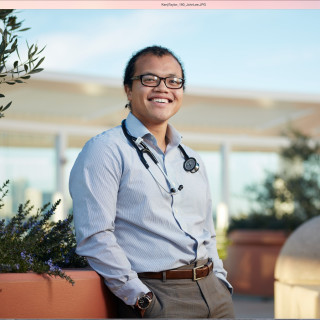
Pharmacists working together with barbershops in the African-American community to treat client blood pressure on-site were able to get 90% of participants to a healthy blood pressure over a six-month period. The study, published in the NEJM this April by researchers from Los Angeles, demonstrate the powerful impact of community health care delivery. For an intervention to get 90% of its participants at goal is tremendous, and it raises the question: why are we not implementing these types of programs more broadly?
When my African American father died suddenly of a heart attack in 2008, he had never seen a doctor, let alone identified his untreated high blood pressure, because he had no health insurance and no trust in the medical system. Two years later, during my first year of medical school, I learned this tragedy is not at all uncommon. Black men have the highest hypertension-related death rate in the United States, almost double that of any other racial group. Black men also have less physician interaction and lower hypertension control rates than any other group. You can easily look back to the Tuskegee experiments or today to the stream of media-covered killings of black men to see why they are less likely to engage in our traditional health care system unless absolutely necessary.
In order to reach black men, barbershops (and other social gathering places such as churches) have been the target of health outreach and are a well-established outreach channel for health interventions. When I started medical school in 2010, the first randomized control trial of a barbershop-based blood pressure intervention demonstrated a modest effect of barber-led screening and primary care referrals. It was this study that inspired me to implement a version of this intervention, now known as the Cut Hypertension Program, in West Philadelphia and Atlanta as a medical student and most recently in the Bay Area as a family medicine resident at the University of California at San Francisco.
From the NEJM study, in which researchers integrated medication titration into the barbershop and demonstrated a significant reduction in blood pressure control, I have had to reflect on the barriers moving forward to implementing these programs more broadly. Questions aside about the sustainability of blood pressure control beyond the six-month time period, the largest hurdle I see is the business model, particularly the cost and payment aspects.
With the advent of telemedicine and permeation of mobile technology into the hands of most people in the country, it is not a giant leap to see how a provider may reach a patient virtually in the barbershop to adjust blood pressure medications (or other medications for that matter) while the barber continues to be the bearer of trust and the regular point of contact in this patient-provider relationship. Telemedicine could allow for significant cost-savings compared to the time and expense needed for pharmacists in the NEJM study to travel between 40 different barbershops in Los Angeles, and it would allow such an intervention to scale without geographic borders.
In today’s world of fee-for-service payment, the question remains of how to “bill” for these services. As we continue to move to value-based payment systems, it is more conceivable that payors may begin to pay for preventative, barbershop-based interventions to manage high-risk populations when comparing the cost of these treatments to the savings realized by preventing a stroke, heart attack or kidney failure. It also becomes more imaginable that health systems and clinics would be willing to adopt these models for the positive effects on their quality measures, which directly affect their reimbursement from payors.
Barbershop-based blood pressure interventions are but one take on a much broader theme of truly community-placed health care delivery. The rising adoption of telecommunication and payment reform combined with a growing body of evidence supporting the effectiveness of community-placed health care delivery leave us at a unique moment to rethink how we practice medicine and how we reach patients.
What are the barriers you see to broadly implementing barbershop-based interventions? Have you seen good examples of community-placed health care delivery programs that are sustainable?
Kenji Taylor, MD MSc, is a family and community medicine chief resident at the University of California at San Francisco. His work focuses on medically underserved populations, mentoring a new generation of black male doctors, health disparities in the African American community, HIV/AIDS, and health delivery science.







